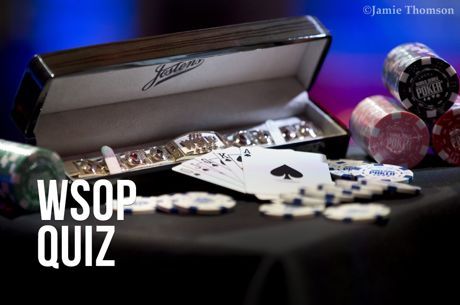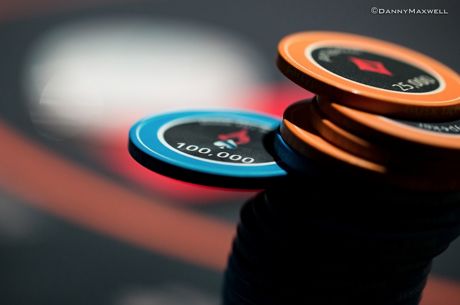His and Hers Poker: Hobbled by Open-Limping

Hello, Poker Friends! This week we're going to examine the perils of a common, yet easily fixable leak: open-limping!
The Table and Villain(s)
Hero (Matt) is at a $2/$5 table at the Borgata. It is late on Saturday evening (now Sunday morning). At this time of night, tables will often play short-handed until one breaks and the remaining players disperse. Hero's table currently has six players.
The Main Villain for this hand is under the gun, directly to Hero's right. Villain is a man in his late 30s or early 40s. He is a recreational player who has been talking about playing at other casinos out in central Pennsylvania.
Although he is a rec player, he seems to think critically about the game and has shown a decent amount of aggression. At least one time, he showed down after raising with a good combo draw. Hero suspects that his raises have been fairly balanced between value holdings and semi-bluffs. Villain has been limping with suited connectors, but opening with stronger hands like higher pocket pairs.
Also involved in this one is this cutoff �� a thinking, aggressive regular who tends to raise flops if he has a strong value hand or a good combo draw.
Effective Stacks: ~$450 (Villain).
Preflop
Action
The Main Villain open-limps for $5 from under the gun. Hero is next to act from the hijack. Hero raises to $25 with J?10?. The cutoff calls. The button and small blind fold. The big blind calls, as does the Villain.
Analysis
"Open-limping" is defined as just calling the big blind when either under the gun or when the action has folded to you. It should be noted, limping in and of itself is not a mortal poker sin.
For instance, let's say you are on the button with 5?3? after five people have limped in front of you. Anyone who has played live $1/$2 will be familiar with this situation. In that scenario, it is acceptable to limp behind with a decent drawing hand (yet not one good enough to open) with position on the rest of the field.
Open-limping is another matter entirely. First, unless you're doing so from the button, you are committing money to the pot when out of position. When you open-raise from an early position, you can help offset that disadvantage by gaining the betting initiative. However, when you limp, you don't even have that going for you.
Second, you are severely capping your range. Observant opponents will notice that you have an open-limping range and an open-raising range. It's not hard to figure out that one is weaker and the other is stronger.
Some players try to offset this by limping with premiums like AxAx. However, that is a strategy which is both transparent and dangerous. Most everyone knows by now that an under-the-gun limp followed by a back-raise three-bet is usually a monster hand. It's also dangerous in that it will often find your AxAx wasted in a horridly multi-way pot if everyone simply limps behind.
Flop
Action
With $102 in the pot, the flop comes J?9?7?. The big blind and the Villain check to Hero. Hero bets $50. The cutoff calls. The big blind folds. The Villain check-raise shoves all in for his remaining stack of $425. Hero calls. The cutoff folds.
Analysis
Let's start by assuaging one fear. We don't have much to worry about from the cutoff behind us. If the cutoff had something he was intending to call off with, he probably would have raised it himself. Even if he has exactly AxJx, that's still a hard sell after a $425 check-raise and an intervening call. So it's fair to say we're just concerned with how we fare versus the Villain.
Now let's see how much equity we need to make this a correct call. We need to call $375, and the current pot is $577. Required Equity = Risk / (Risk + Reward) or $375 / ($375 + $577) = 39.4 percent.
For value hands, it's fair to say that Villain could have any of the suited combos which would give him two pair or a straight. The trouble for Villain is that it is very unlikely that he has a set. How so? The open-limp!
Villain had been seen to open his pocket pairs from early position. That certainly means that he would open both JxJx and 9x9x. He probably would also open 7x7x, but it is possible he would limp it.
At the table, Hero analyzed whether to call by first noting that his jack blocked many two-pair combos. Also, his lack of a club did not block Villain from having a flush draw. Those factors alone may not have been enough to call. However, when coupled with Villain also not having all of the sets in his range, Hero decided that this was a necessary defend.
Let's check Hero's instincts with an equity calculator. Let's say Villain's value range is J9s, J7s, T8s, 97s, as well as one discounted combo of 77. For bluffs, let's say Villain has all of the nut flush draws from A?10? down, suited kings and queens down to K?7? and Q?7?, and all two-club combos of suited two-gappers and connectors down to 6?5? which give him a strong combo draw.
Against that range, Hero has 42.3 percent equity and a correct call.
By contrast, let's see what happens if Villain had open-raised instead of open-limped. In that case, Villain would also have all combos of JxJx, 9x9x and 7x7x. When we add in those combos, Hero's equity falls to 37.9 percent and makes this into a fold.
It turns out that Hero's on-the-felt instinct was correct �� Villain's open-limp was a deciding factor pushing his equity over the calling line.
Turn and River
Action
The board runs out clean, bringing two low cards and no clubs. Villain tables his K?Q?. Hero wins with his J?10?.
The Takeaway
Open-limping is a major leak with a very simple solution: just don't do it! Instead, open-raise everything you want to play and fold the rest.
It takes discipline, but the alternative can be costly �� capping your range against an observant player who may make you pay for a lack of nutted combos.
His and Hers Poker is a free, weekly strategy podcast hosted by Matt and Tracey Waldt. They are a married couple who play live cash games on the East Coast. Their podcast focuses on providing practical advice about hand reading, with an emphasis on how to identify and exploit the common leaks and imbalances of low-stakes players. His and Hers Poker can be found on iTunes, Google Play and other podcast services. For more information, and to subscribe, please visit hisandherspoker.com.









